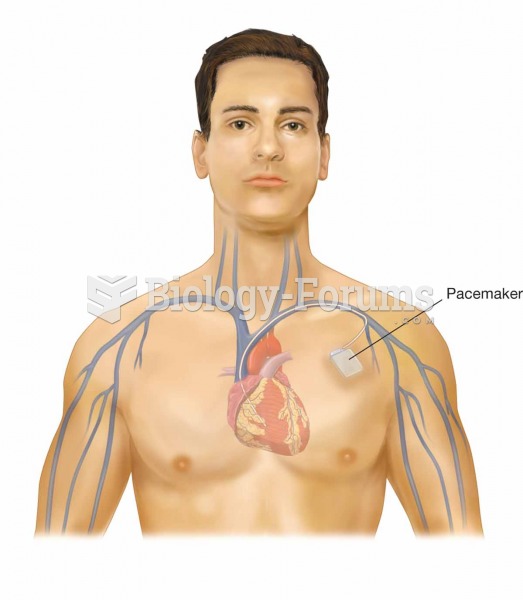|
|
|
On average, the stomach produces 2 L of hydrochloric acid per day.
Once thought to have neurofibromatosis, Joseph Merrick (also known as "the elephant man") is now, in retrospect, thought by clinical experts to have had Proteus syndrome. This endocrine disease causes continued and abnormal growth of the bones, muscles, skin, and so on and can become completely debilitating with severe deformities occurring anywhere on the body.
Everyone has one nostril that is larger than the other.
More than 2,500 barbiturates have been synthesized. At the height of their popularity, about 50 were marketed for human use.
Side effects from substance abuse include nausea, dehydration, reduced productivitiy, and dependence. Though these effects usually worsen over time, the constant need for the substance often overcomes rational thinking.
 Vertebral compression Fractures of the spine (vertebra) can cause severe ”band-like” pain that radia
Vertebral compression Fractures of the spine (vertebra) can cause severe ”band-like” pain that radia
 A permanent epicardial pacemaker. The pulse generator can be placed in subcutaneous pockets in the s
A permanent epicardial pacemaker. The pulse generator can be placed in subcutaneous pockets in the s





